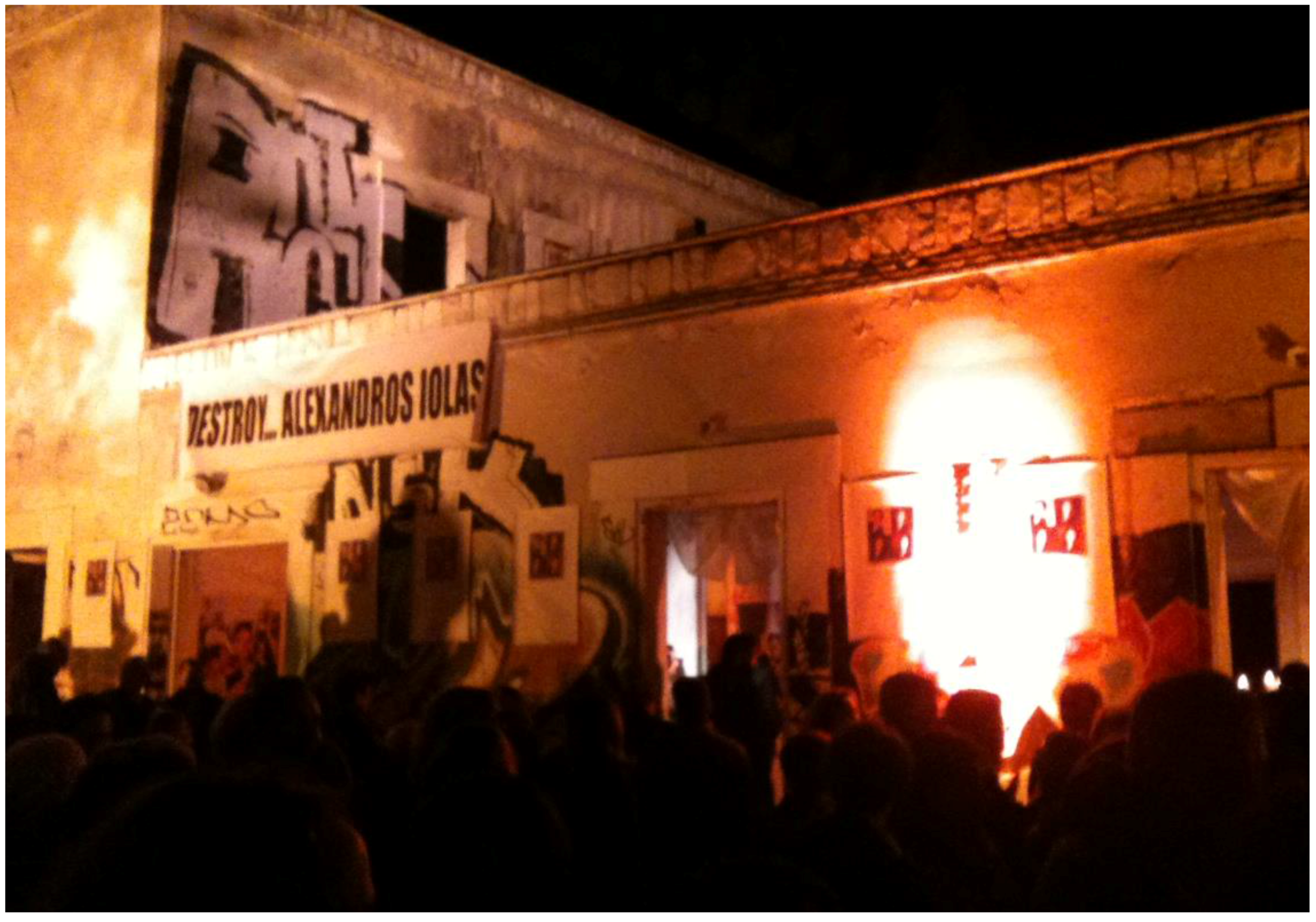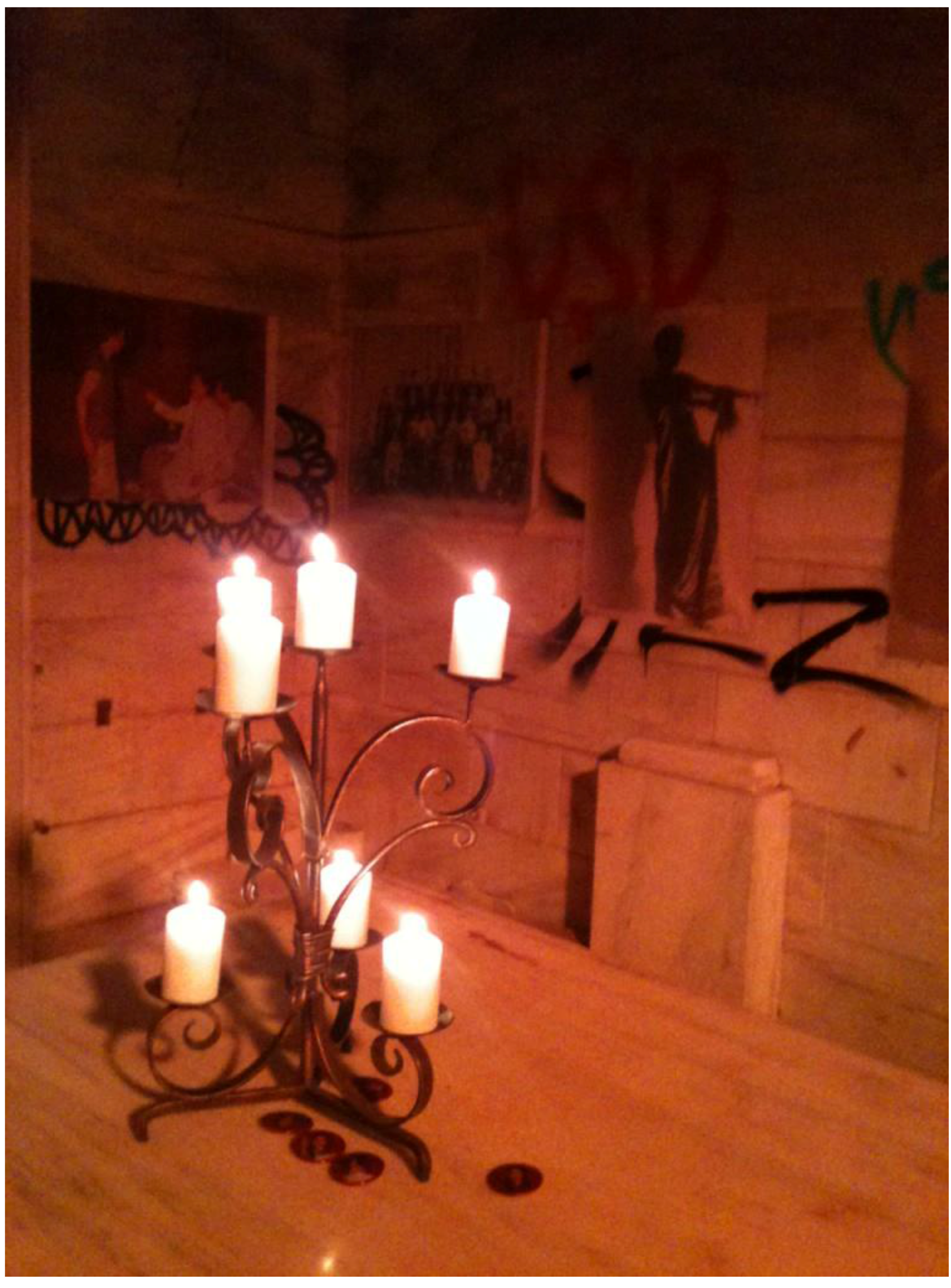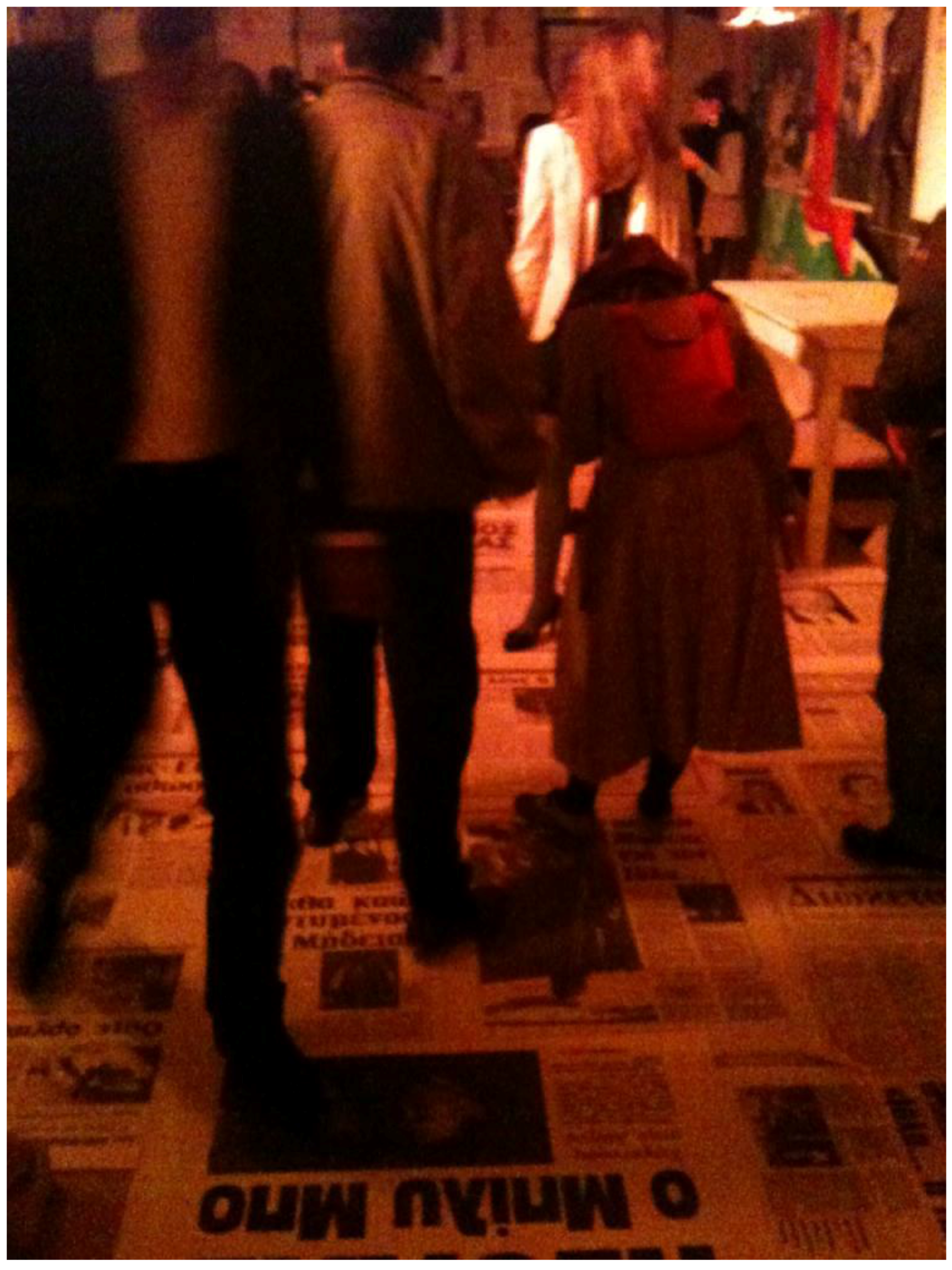Destroy…Alexander Iolas: The Villa-Museum and the Relics of a Lost Collection
Abstract
:1. Introduction
2. Destroy…Alexandros Iolas



3. The Villa-Museum

Conclusion
Conflicts of Interest
References
- Oral history interview with Brooks Jackson. 1976 Mar. 22. Sound recording: 1 sound tape; Transcript: 38 p; New York, USA: Archives of American Art, Smithsonian Institution, 1976.
- M. Ekonomou. “Odeporiko ste villa Iola.” published online on 18 March 2010. Available online: http://www.greekarchitects.gr (accessed on 25 October 2013).
- N. Stathoulis. Alexandrou Iola, e zoe Mou. Athens, Greece: Odos Panos, 2012. [Google Scholar]
- “Art of Protest, On Testing Cultural Forms of Resistance.” Variant 42 (2011). Available online: http://www.variant.org.uk/ (accessed on 15 December 2013).
- R. Greenberg, B. Ferguson, and S. Nairne, eds. Thinking about Exhibitions. London, UK: Taylor & Francis, 1996.
- J. Stojanovic. “Avant-Garde and the Culture of Protest: The Use-Value of Iconoclasm.” In A History of Visual Culture, Western Civilisation from the 18th to the 21st Century. Edited by J. Kromm and S. Benforado Bakewell. Oxford, UK: Berg, 2010, pp. 54–67. [Google Scholar]
- S. Bennett. “Public relations: Nicolas bourriaud interview.” ArtForum, 2001, 47–48. [Google Scholar]
- N. Bourriaud. Relational Aesthetics. Paris, France: Presses du réel, 2002. [Google Scholar]
- H. Dorsey. “Where all that glitters is gold – Alexander Iolas’ house.” Vogue 171 (1981): 292–296. [Google Scholar]
- P. Dragadze. “Alexander Iolas’ temple of art.” Town Country 138 (1984): 231–237. [Google Scholar]
- I. Love. “Alexander iolas.” Interview Mag. 14 (1985): 108–110. [Google Scholar]
- Anonymous. “Alexandros iolas (1908–1987).” Odos Panos 32 (1987): 119–130. [Google Scholar]
- “Eikastika, TV documentary presented by Maria Karavia.” ERT. 1982. Archive Rodopoulou-Chatzi. Available online: http://vimeo.com/35626105 (accessed on 16 December 2013).
- N. Brodie. “Introduction.” In Illicit Antiquities: The Theft of Culture and the Extinction of Archaeology. London, UK: Routledge, 2003, pp. 2–3. [Google Scholar]
- “Front page.” Newspaper Ethnos, 3 October 1985, no. 1223.
- A. Liatsos. “Sarkazei….” Ethnos, 7 October 1985, no. 1227. 24. [Google Scholar]
- “Front page.” Newspaper Auriani, 17 July 1985, no. 9827.
- “Front page.” Newspaper Ethnos tis Kyriakis, 6 October 1985, no. 156.
- J. Russell. “Alexander Iolas, ex-dancer and surrealist art champion.” N. Y. Times, 1987, 136, 14. [Google Scholar]
- E. Fotiadi. “O mythos tou syllekti kai e syllogi tou mythou. Erga technis, istories, antikeimena, scheseis tou Alexandrou Iola.” Museol. J. 7 n.p. (2013). [Google Scholar]
Appendix
© 2014 by the authors; licensee MDPI, Basel, Switzerland. This article is an open access article distributed under the terms and conditions of the Creative Commons Attribution license (http://creativecommons.org/licenses/by/3.0/)
Share and Cite
Kolokytha, C. Destroy…Alexander Iolas: The Villa-Museum and the Relics of a Lost Collection. Arts 2014, 3, 105-115. https://doi.org/10.3390/arts3010105
Kolokytha C. Destroy…Alexander Iolas: The Villa-Museum and the Relics of a Lost Collection. Arts. 2014; 3(1):105-115. https://doi.org/10.3390/arts3010105
Chicago/Turabian StyleKolokytha, Chara. 2014. "Destroy…Alexander Iolas: The Villa-Museum and the Relics of a Lost Collection" Arts 3, no. 1: 105-115. https://doi.org/10.3390/arts3010105



